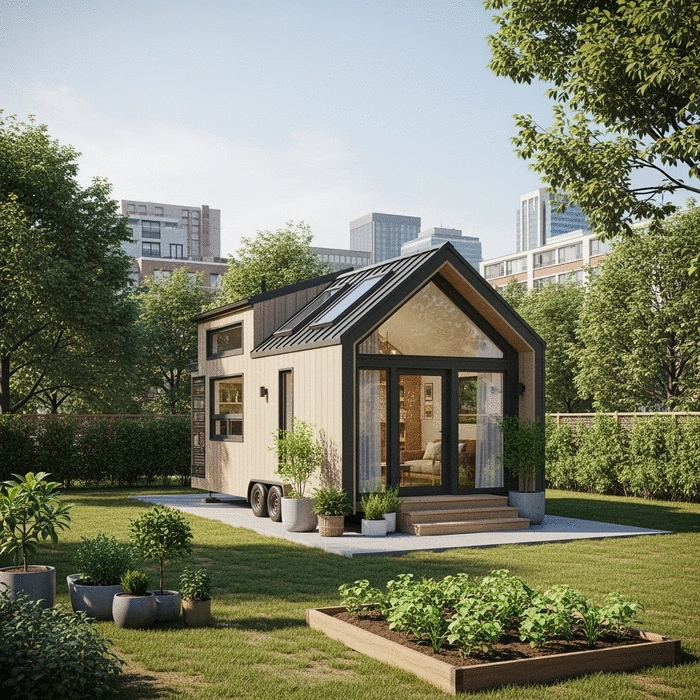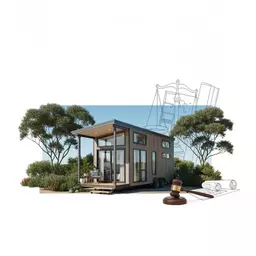Building Codes
These codes dictate the safety standards and construction methods required for tiny homes.
Get expert advice, innovative design ideas, and practical tips for your tiny home journey in Australia.
Posted on: 2025-10-29
By: Sophie Marchant
Imagine transforming your living space into a tiny home that embodies simplicity and sustainability. However, before you dive into the tiny house movement, understanding zoning regulations is crucial for ensuring compliance and successful integration into your community.
Understanding the essential zoning laws and building codes that impact tiny homes can ensure a smoother journey toward tiny living. For a comprehensive overview of these regulations, you might find our guide on Tiny House Zoning Laws Explained very helpful.
These codes dictate the safety standards and construction methods required for tiny homes.
These regulations specify how far structures must be from property lines, streets, and other buildings.
Many municipalities have minimum space requirements that may affect your tiny home's design.
When it comes to tiny homes, understanding zoning compliance is essential for anyone looking to make this lifestyle a reality. Tiny house zoning refers to the specific regulations and guidelines that govern where and how tiny homes can be placed in urban areas. As someone immersed in the tiny house movement, I can tell you that these regulations are not just bureaucratic red tape; they play a pivotal role in urban planning and community development.
In essence, tiny house zoning ensures that these compact homes fit harmoniously within existing neighborhoods. It includes important elements such as land use, density, and environmental concerns. So, why is this important? Well, addressing zoning effectively can lead to increased opportunities for sustainable living, reduced housing costs, and a stronger sense of community. Are you curious about how zoning laws apply specifically to your area? Let’s explore this further!
Tiny house zoning can be defined as the laws and regulations that dictate where tiny homes can be built or placed. Understanding these definitions is crucial for anyone contemplating a tiny living experience. It helps you navigate local regulations and avoid potential pitfalls.
In urban planning, tiny houses are often classified as accessory dwelling units (ADUs) or standalone structures. This classification can greatly influence whether you can legally park your tiny home on a piece of property. Below are a few key reasons why understanding tiny house zoning is important, including how it impacts financing your tiny house purchase:
There are several primary zoning laws and building codes that can impact tiny homes. Understanding these regulations is key to ensuring your tiny home journey doesn't hit unexpected roadblocks. Some of the most important legal aspects to consider include:
As you embark on your tiny home adventure, consider reaching out to local authorities to clarify the specific regulations that apply to your desired location. It’s always a good idea to do your homework upfront to avoid any compliance challenges down the line!
Urban zoning laws and municipal codes vary widely from one location to another, reflecting the unique needs and characteristics of each community. Understanding these differences is crucial for anyone wishing to build or park a tiny home in an urban area. For instance, in some cities, tiny homes are easily accepted, whereas in others, they might face significant restrictions.
Here are some aspects of urban zoning laws worth noting:
As the founder of The Tiny Living Guide, I am passionate about helping individuals navigate these complex regulations. Whether you are considering building a tiny home or just curious about the possibilities, understanding urban zoning laws is a vital first step in your journey!
Here's a brief recap of the key points discussed so far:
Engaging with local authorities is a crucial step in advocating for tiny house zoning changes. First, it’s essential to understand the processes in place for requesting zoning variances. Familiarize yourself with the specific requirements of your local government, as these can vary widely.
When you're ready to reach out, consider preparing a comprehensive petition that outlines your request clearly. This can include details such as the benefits of tiny homes to the community, potential environmental impacts, and how your proposal aligns with local planning goals. Remember, clarity is key!
Creating a supportive community atmosphere around tiny house projects can make a significant difference in overcoming opposition. Start by hosting informational meetings where residents can express their opinions and ask questions. This openness fosters understanding and can turn naysayers into supporters!
Another effective strategy is to partner with local organizations that share similar values, such as sustainability and affordable housing. By joining forces, you can amplify your message and gain more visibility. Here are some ideas for building support, which can include learning about living debt-free in a tiny home:
Understanding and leveraging local government regulations can be a powerful tool in your advocacy efforts. Many municipalities have existing frameworks that support alternative housing solutions, which can be beneficial for tiny house initiatives. Start by reviewing your local zoning laws to identify any opportunities.
Consider proposing amendments or adjustments that align with these regulations. For example, you might advocate for reduced minimum lot sizes or streamlined permitting processes. Here are some steps to take:
In summary, navigating the world of tiny house zoning in urban areas can be challenging but rewarding. Keeping in mind the importance of community engagement and understanding local regulations can pave the way for successful projects. Always remember to gather support and communicate clearly with local authorities!
Are you ready to take the plunge into tiny living? I encourage you to connect with local advocacy groups and dive into the world of tiny house zoning. Together, we can create a more inclusive environment for everyone seeking the joys of minimalism and sustainability. For more insights on starting your tiny home journey, explore our guide on choosing your ideal tiny home. Let’s make tiny living a reality in our communities!
Here is a quick recap of the important points discussed in the article:

 What if your small living space could also be a sanctuary for the planet? Embracing sustainability n
What if your small living space could also be a sanctuary for the planet? Embracing sustainability n
 As the tiny home movement gains momentum in Australia, the legal landscape can feel daunting. Howeve
As the tiny home movement gains momentum in Australia, the legal landscape can feel daunting. Howeve
 Did you know that zoning laws can significantly impact the feasibility of sustainable housing initia
Did you know that zoning laws can significantly impact the feasibility of sustainable housing initia